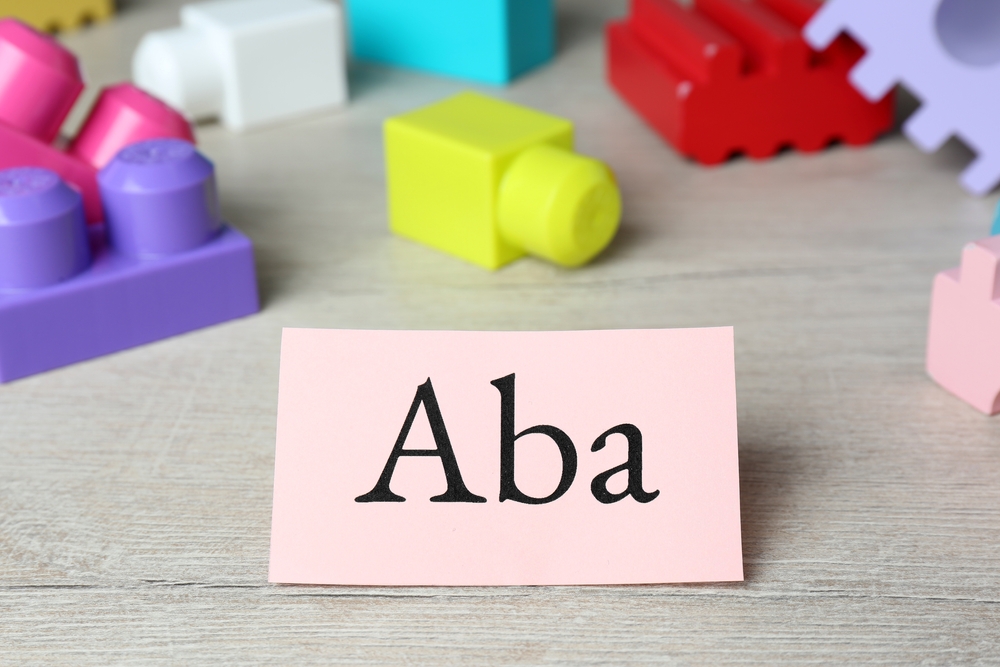If you and your child are just starting out with ABA Therapy (Applied Behavior Analysis), it may be confusing to hear all the new terms you’ve come across. At Solstice Behavioral Health & Consulting, we believe that your child’s progress will come from a team effort, which includes parent involvement and support. That is why parents need to understand the tools they need to make their journey through this process as easy as possible. To help you, we’ve created a list of some of the most common terms used in ABA therapy.
Frequently Used Terms in ABA Therapy (Applied Behavior Analysis)
ABA: “Applied Behavior Analysis” is a way to teach, manage, or reduce behaviors.
ABA Therapist: A person who provides ABA therapy.
Antecedent: What happened right before the behavior.
Cooperative Play: The child shows interest in the individuals involved, and the activity in which they are engaged.
Contained Classroom: The classroom has only children with special needs.
Developmentally Delayed (DD): An infant or child is not progressing as they should be in areas such as babbling/talking, sitting up, crawling.
Discrete Trial Training (DTT): The therapist breaks more extensive skills into small (“discrete”)
components. It makes learning a new skill easier by using the graduated steps.
Echoics: Imitating what is heard.
Elopement: A learner runs away or wanders from an area they are not supposed to leave.
Fine Motor Skills: Coordination and movement of the smaller muscles of the body.
Functional Behavior Assessment (FBA): Determines a behavior and then creates an intervention based on that function. It involves observation, interviewing, and collecting data.
Gross Motor Skills: Skills using the larger muscle groups, which involve sitting, walking, jumping, and so forth.
Hand Over Hand Prompting (HOH): A physical prompt – placing hands over the learner’s hand to help them comply with a directive or motor demand.
Individual Education Plan or Individual Education Program (IEP): This is a legal document for special education students (usually up to age 22). It outlines the goals to work on during the coming year.
Inclusive Classroom: The classroom includes typical learning children and children with special needs.
Intervention: The plan of action to be used to change a behavior. Or build up a skill.
Intraverbal: This is a type of language that involves explaining, discussing, or describing a situation or item that is not present or not currently happening – such as asking the person, “What are you playing with today?”
Mainstream: Successfully placing a special needs child into a typical classroom. It is, of course, the long-term goal for a child with special needs.
Mand: The word is derived from “command” and “demand.” The child is requesting a desired item.
Mouthing: The child inappropriately places items in his/her mouth, such as a toy. It can also refer to a child “licking” an object.
Parallel Play: This happens when two or more children are playing near each other, but they do not interact. This may be because the child prefers to play alone or does not understand how to play with others.
Picture Exchange Communication System (PECS): The functionally non-verbal person uses picture cards to communicate. The system allows the individual to request and communicate their needs.
Prompt: A type of assistance or a cue given to help the learner complete a task. It also helps to increase accurate responses.
Registered Behavior Technician (RBT): A credential that states the person has successfully met specific education and experience standards and successfully completed an exam. This is now a requirement to be part of an ABA staff.
Reinforcer: Something used to motivate the learner to complete a task or engage in a behavior. It will increase the likelihood that the behavior will occur again. It might be something tangible, social, or physical.
Self-Injurious Behavior (SIB): The person performs actions resulting in physical injury to the body. This includes hitting oneself, head-banging, biting, picking at the skin, or scratching or rubbing oneself repeatedly to cause bruising, bleeding, or other harm.
Shadow: A person who attends school with a child to help increase independence, assist with lessons, and manage negative behaviors.
Tacting: The child labels or names an object, action, or event. It is how we describe the things we hear, see, smell, and touch.
Target Behavior: This is behavior the therapist is trying to increase or decrease. Multiple target behaviors can be worked on at the same time.
Transitions: Changing from one activity to another. For example, the child transitions from a play activity to a work activity, which might be very difficult for the individual.
Verbal Behavior (VB): It focuses on understanding and teaching language as a behavior.
At Solstice Behavioral Health & Consulting, we create a fun, play-based atmosphere focused on progress. Our ABA therapy program can help children grow their communication, social, and living skills, especially those living with Autism Spectrum Disorder (ASD). Don’t worry if you’re new to ABA, our team will explain any new terms you come across during your treatment plan and answer any questions you have. Our Parent Training is also a great place for parents, grandparents, and other family members to learn how to support their little one in this journey. To learn more, come visit our center or give us a call at (203) 900-4720.


